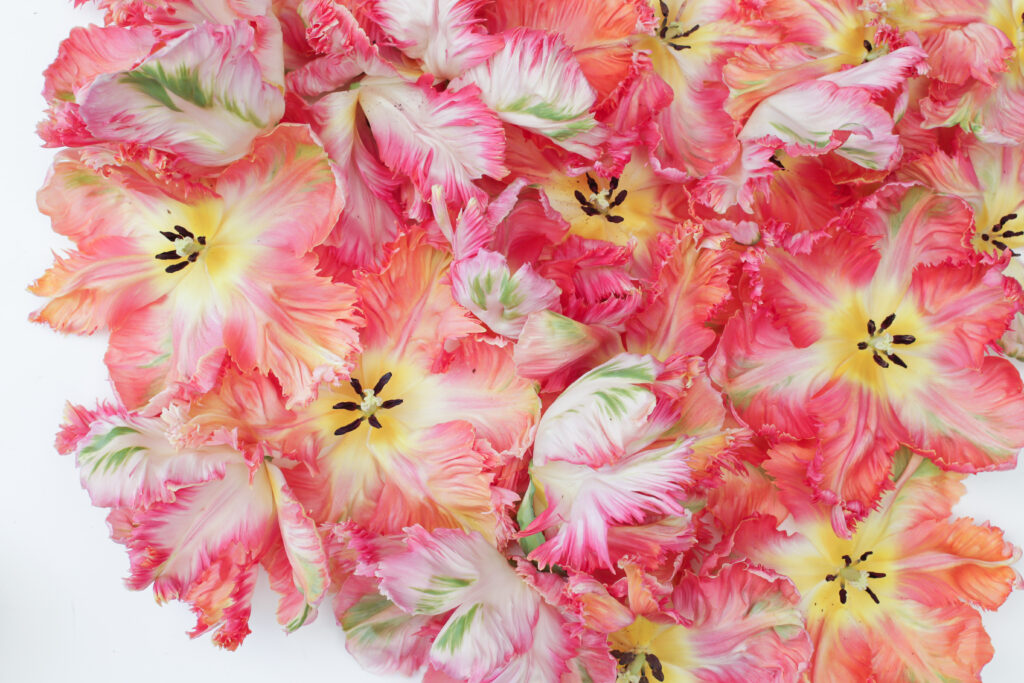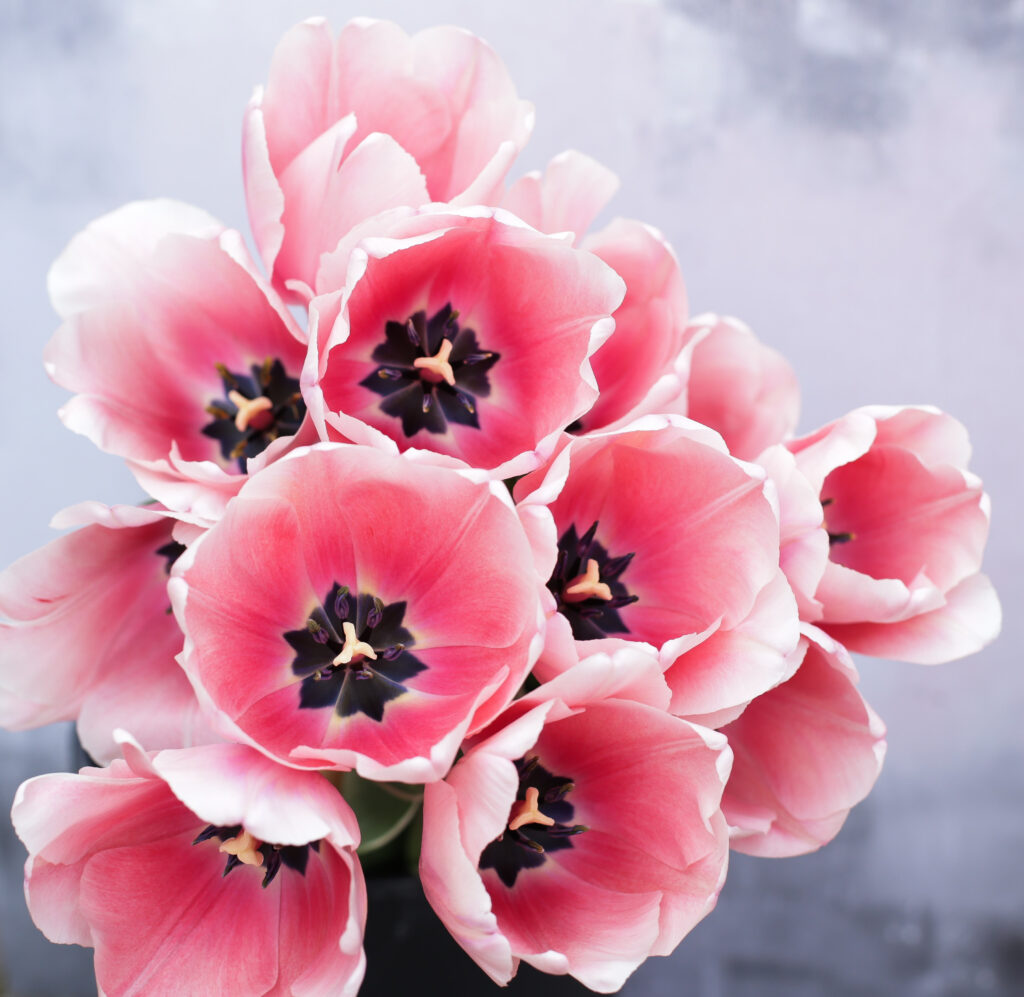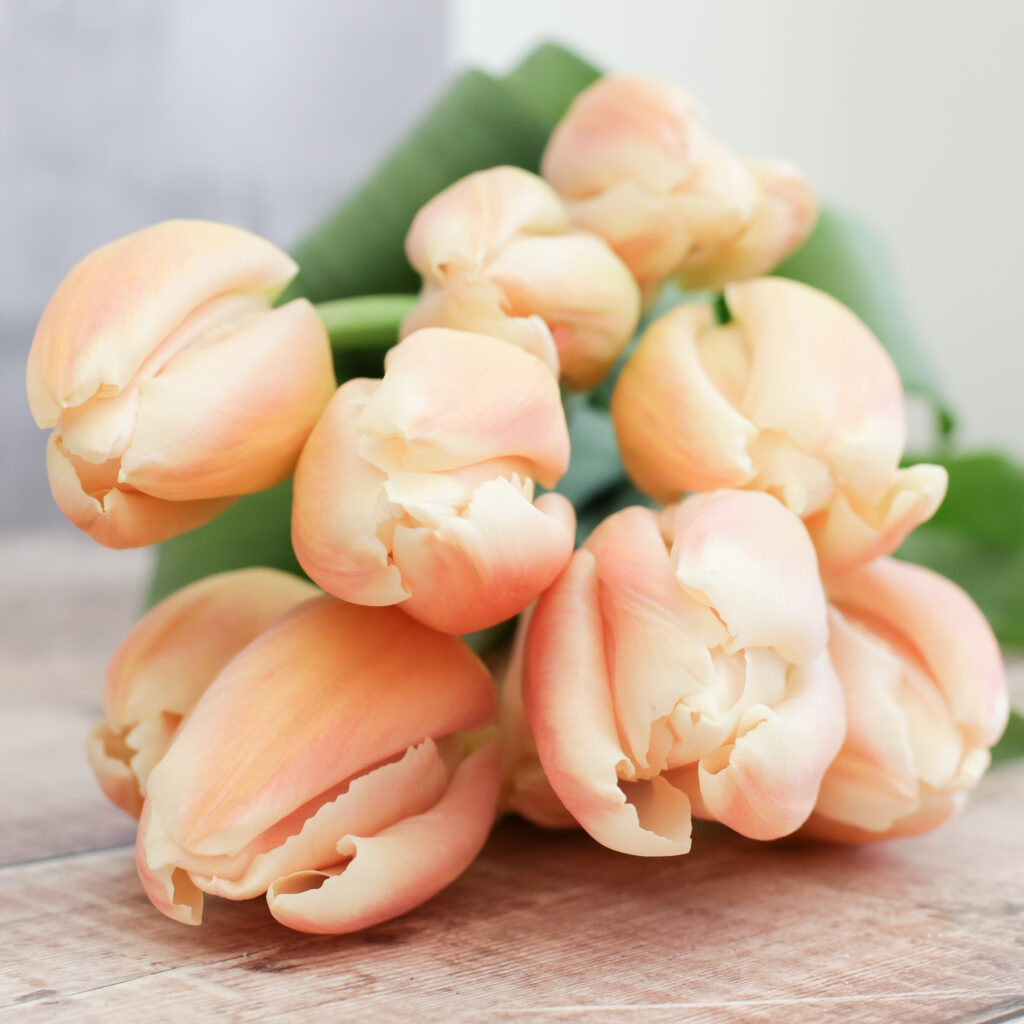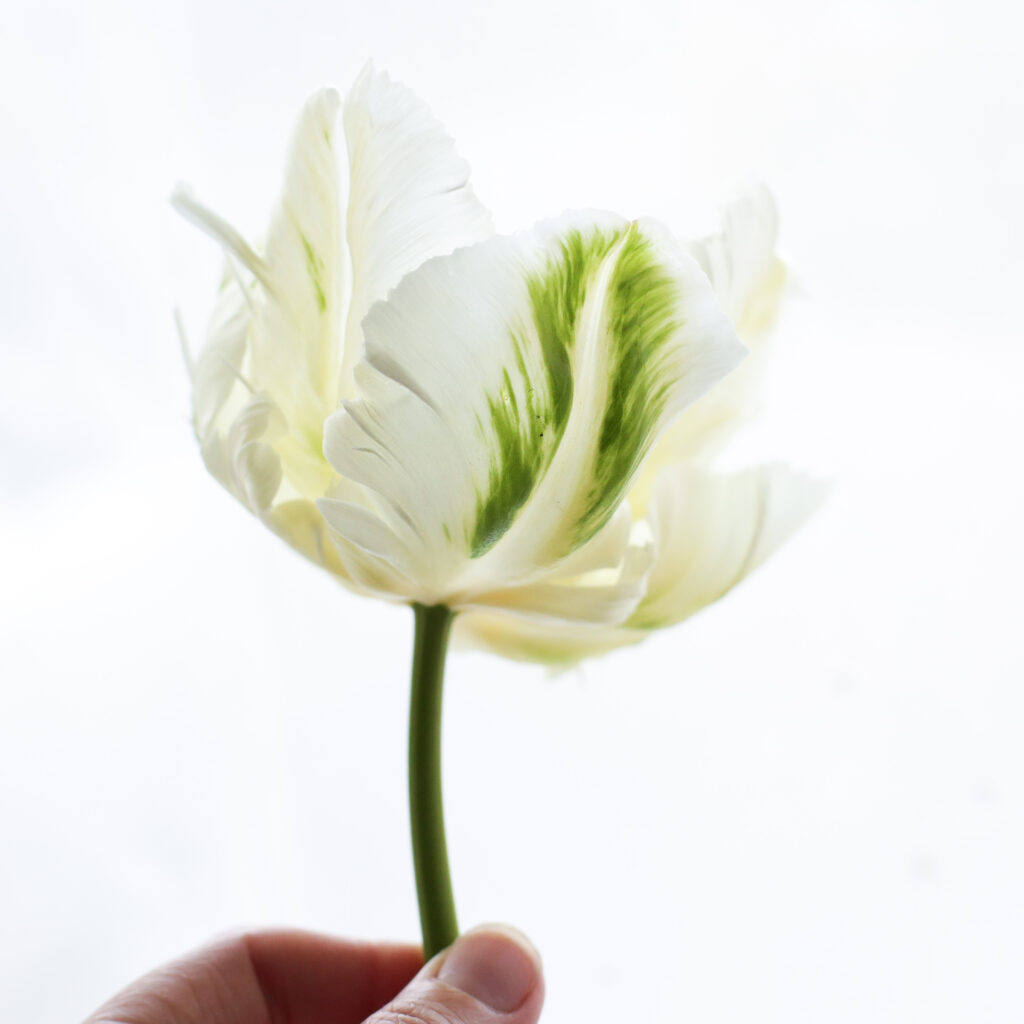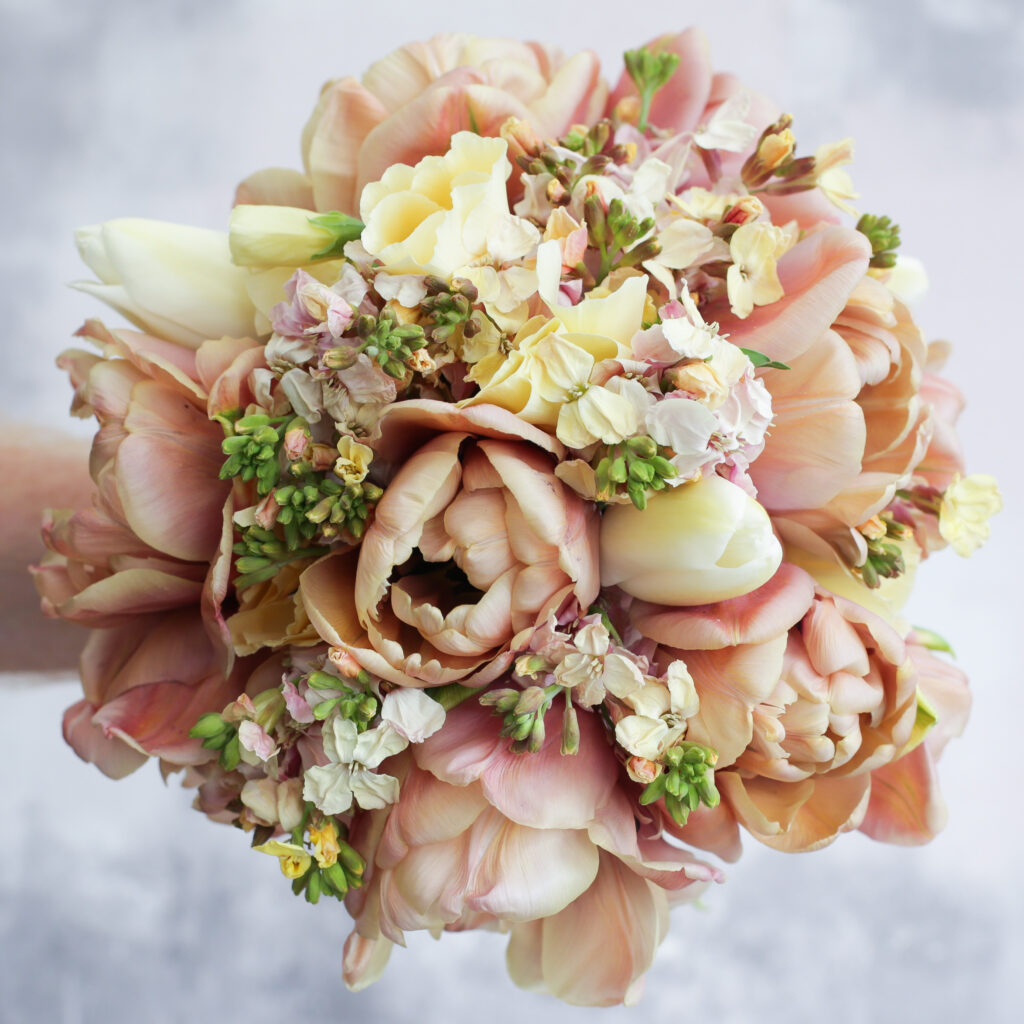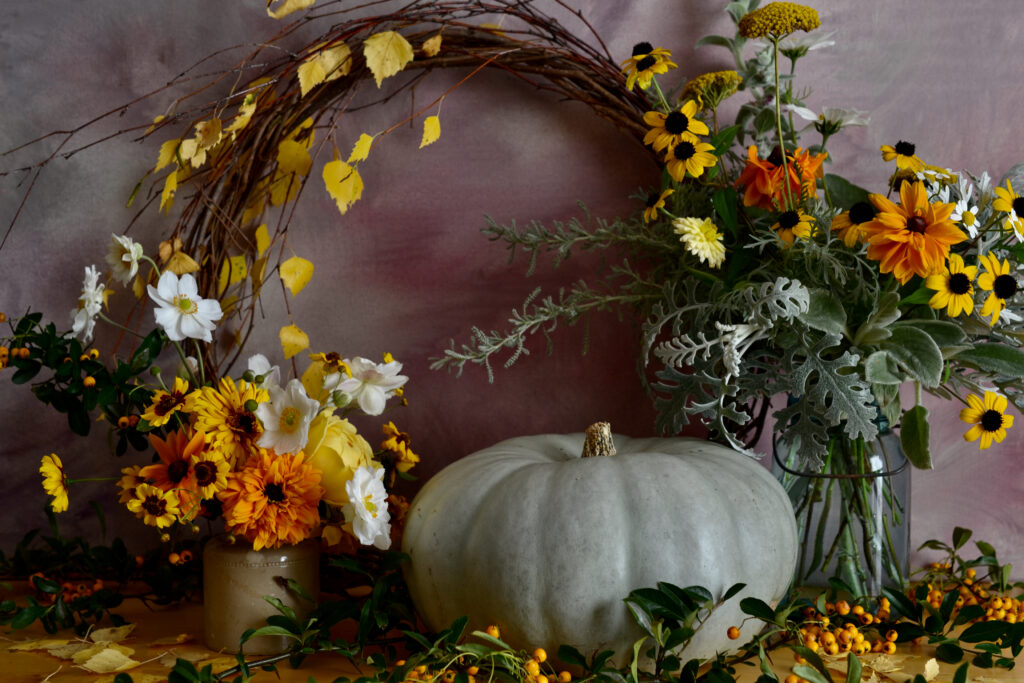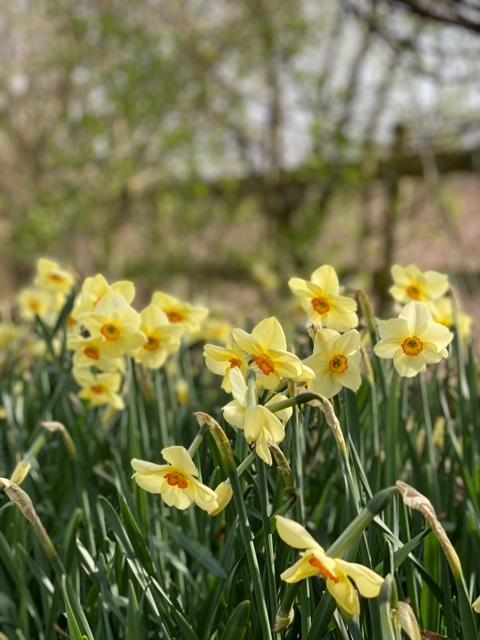FAQs about Tulips
We answer your most common questions about this gorgeous spring flower.
-
Are there different types of tulips?
There are a huge variety of tulip types, some referred to as 'early' (flowering in March and often shorter stemmed) and some referred to as 'late' (flowering in May). Visit a specialist bulb selling site to get an idea of the full range. Singles have just one set of petals and goblet shaped flowers while doubles are many layered and ruffled like peonies. There are also parrot types with large, intricate flower heads etched with ridges and ruffles, viridiflora tulips streaked with green, fringed tulips bearing frilly edges to their single flowers and lily flowered tulips with gracefully reflexed pointed petals and curved, waisted cups. -
What colours do tulips come in?
Pretty much every colour in the rainbow except blue. -
When are tulips available as cut flowers in the UK?
Commercially grown indoors, they're usually available from late November through to April. Outdoor grown by artisan flower growers, they're a spring crop usually from early April to the end of May - but the season can shift according to the weather. -
Will tulips flower just once or year after year?
Most tulip bulbs will give you a single stem with a flower. If you leave the foliage to die back naturally after flowering, it will feed the bulb which will go on to flower again for a further 2 or 3 years, though flowers may get smaller. -
When's the best time to plant tulip bulbs?
After the first frosts in late autumn or early winter. Tulips need a period of very cold weather to encourage them to grow longer stems.
